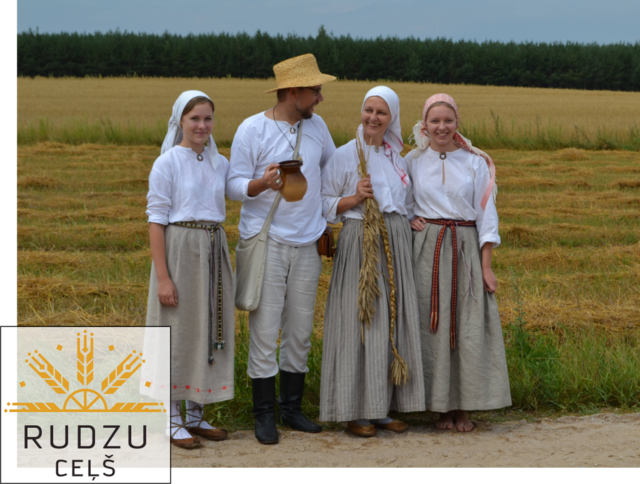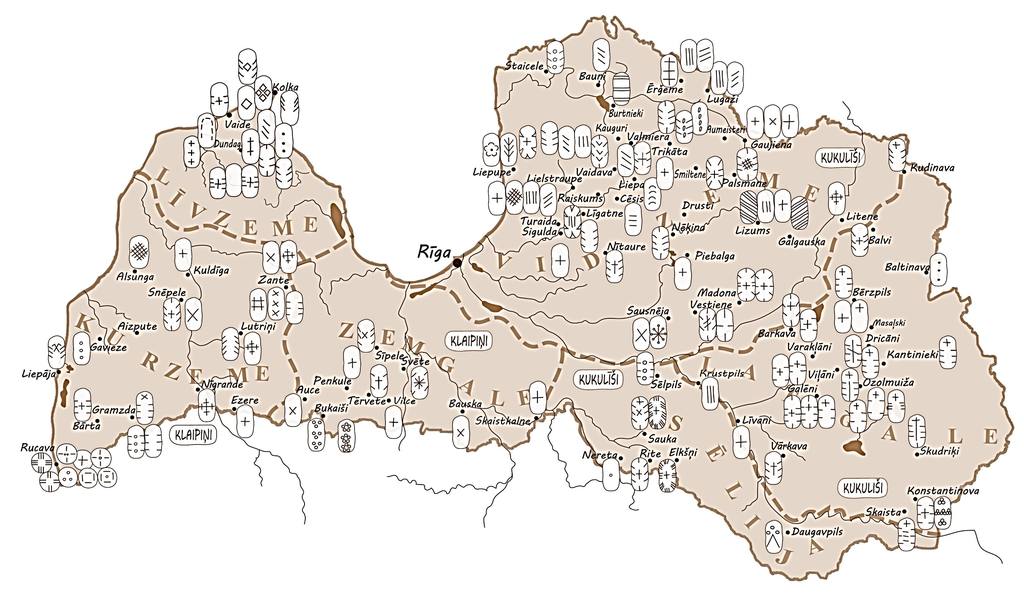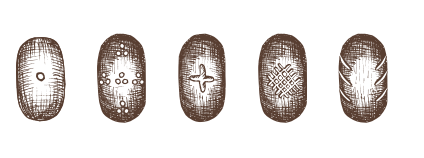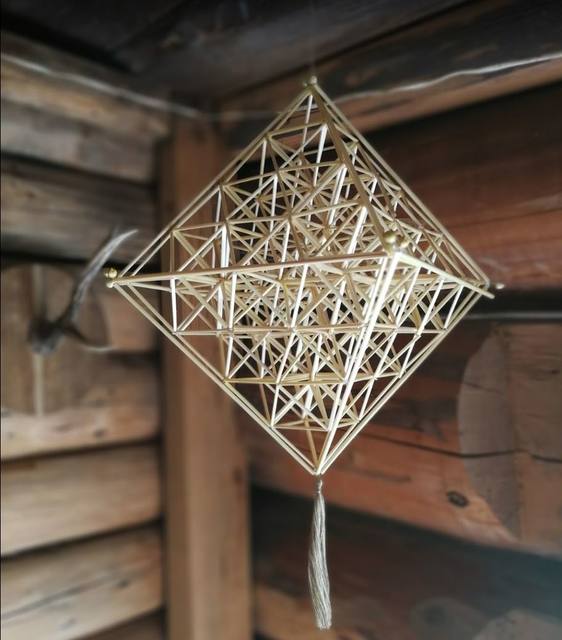History
Rye History and Traditions in Latvia
Cereal - Rye
Once upon a time, rye was considered to be a weed; however, over time farmers gradually discovered that rye had a better cold-hardiness and that it was more resistant to adverse weather conditions than wheat or barley. In Northern Europe, the first evidence of rye comes from the 1st century AD, but at the turn of the 8th to the 9th century winter rye had become the leading crop. According to the archaeological research conducted in the Lake Castle of Āraiši, in the 8th-9th century rye (Secale cereal) was cultivated and used in alimentation in Latvia as well. At the Open-Air Archaeological Museum of the Lake Castle of Āraiši, visitors can witness how bread was baked in those ancient times and how cereal dishes were cooked in clay pots over a campfire.
Rye was widely grown as a crop in Latvia in the 18th-19th centuries and gradually it became one of the most important cereals. Rye is a winter crop, meaning that it is sown in autumn and in winter the sprouts have a dormant period, restarting their growing cycle with the arrival of the warm spring weather.
Traditions and Beliefs
In summer, rye blossoms for two weeks, then matures for two weeks, and then dries for another two weeks. After this period, it is ready for harvest.
Just before the harvest, when the rye had matured, Latvians used to pick rye stalks for making rye hats, which would be used the following year during the Shrovetide celebrations. This ritual was supposed to increase fertility and awaken the spring.
There was an ancient saying that if you were to find a two-eared rye stem during harvest, you were to expect wealth, happiness in love, and fertility. Upon the finishing of the harvest, a rye ear crown was usually made and brought home to the hostess. A Latvian tradition was to celebrate the day of Jēkabs. It was the day of new rye bread, when loaves baked from the freshly harvested rye were brought to the table.
Marks on Bread Loaves
Before baking the bread, the hostess marked every single loaf that was to be put in the oven with her fingers or the palm of her hand. Usually, the mark was a straight cross, a diagonal cross, or several stripes. Ethnographer Indra Čekstere has studied the bread baking traditions in different regions of Latvia and has created a map of bread marks.
In Kurzeme, the most common mark was the cross of crosses (the sign of Māra), whereas in Vidzeme the women also used to mark the sign of Laima, which reminds one of an ear of a crop and was also called the sign of fire. In Zemgale, a simple diago - nal cross was popular but in Latgale, a basic straight cross. When marking the breads, the baker would say these or similar words: “May you be enough for the family, enough for the children, enough for the poor, and enough for ourselves!”
Marks on Bread Loaves in Latvia (map)
Rye Straw Puzuris
Special decorations called puzuris are made from rye straw. These are intricate and delicate straw mobiles, known for centuries not only in Latvia, but also in Northern Europe. Ancient Latvians believed that these decorations freed space from negative energies and helped in arranging one’s thoughts. Puzuris is usually hung from the ceiling with the help of a linen or woollen thread so that it rotates slowly with the flow of air. Its rotation indicates that there is sufficient air circulation in the room, necessary for human health.
Rye Varieties and Characteristics
Rye is mainly grown in northern countries because it doesn’t need that much sun. True bakers know that the flavour and consistency of real rye bread can only be obtained by using flour that has been made from rye grain historically grown in Latvia. The most popular local varieties are Kaupo, Amilo, Walet, and Matador. These varieties are less productive and more difficult to grow, which is why only a few farmers choose to grow them, whereas bakers who bake traditional rye bread appreciate the quality of the flour obtained from these varieties. In the plant breeders’ eyes, the more productive a plant variety is, the more quality it loses when transformed in food. The historic rye varieties are of national value and it is important to maintain their cultivation in order to preserve the seeds and therefore the opportunity to recreate the real flavour of rye bread, so beloved by every Latvian.
Rye Bread
In Latvian homes rye bread has always been a staple dish, earning it a place among the things, places and ideas considered Latvian symbols today.
Salinātā rye bread has a deep, dark colour, a pleasant aroma of baked bread and caraway seeds, and a sweet and sour rye bread flavour. Salinātā means that it has been made sweeter, for example, by scalding flour with hot water. This is an old word that is most commonly used in the Kurzeme region, where rye bread was called salinātā bread or long bread.
Baking traditional rye bread takes two days. The flour is scalded with boiling water and the dough is mixed with sourdough in a wooden dough trough, adding malt and caraway seeds. Sugar is also added to the dough, as it intensifies the fermenta - tion process and gives the bread its special sweet and sour flavour that is not typical for rye bread baked in other countries. In order for the dough to rise well, it must be kneaded by hand for a long time. The dough is left to proof for many hours and baked in a hot wood-fired oven, laying maple leaves under it or bran when cooking in winter. According to the ancestral tradition, rye bread is to be baked in large loaves and it can be stored for up to two weeks. Rye bread doesn’t lose its nutritional value during baking, as its fibre content remains the same and B vitamins are heat resistant. The crust of the bread also contains many valuable biologically active compounds.
Latvian salinātā rye bread is registered in the EU quality scheme “Traditional Speciality Guaranteed” (Regulation (EU) No 12/2014).
Currently (October 2020), one company - SIA N.Bomja maiznīca "Lielezers" is baking rye bread with the "GTĪ" quality mark in Latvia.
Insight into rye bread baking:
7 Reasons for Eating Ryw Bread*:
Rye grains contain a lot of substances necessary for the human body. Grain casings contain fibre and minerals, whereas the germs contain proteins, vitamins B and E, and vegetable oils. The middle part of the grain is a source of energy, as it contains starch, protein, and carbohydrate.
- Vitamins increase the body's defences against various diseases;
- Carbohydrate provides the body with endurance and strength;
- Fibre cleanses the body and improves blood circulation;
- Protein strengthens the muscles and nerve cells;
- The complex of antioxidants, vitamins, and protein improves metabolism;
- Rye absorbs fewer harmful substances from the soil, such as mercury or lead;
- Bioactive compounds strengthen the immune system.
*Information prepared by the Latvian Bakers’ Association.
Types of Rye Flour
- WHITE RYE FLOUR - the finest type of rye flour. It is obtained by separating the grains from their cas - ings and preserving only the endosperm of the grain, which is then finely ground. White rye flour is used to make sweet and sour rye bread.
- MEDIUM RYE FLOUR - coarser than white rye flour, containing the endosperm and quite a lot of the bran of the grain.
- DARK RYE FLOUR - obtained by grinding the whole grain to - gether with the bran and germ, which is why it is high in fibre, B vitamins, iron and folic acid. Dark rye flour can only be stored for 2-3 months, because after this time it becomes bitter due to the oxidation of the oils in the grain germ.
Types and Varieties of Rye Bread
- RYE BREAD - contains at least 90% of rye flour;
- WHOLEGRAIN RYE BREAD - contains only dark rye flour that is obtained by grinding the whole grain with its bran, endosperm and germ;
- SWEET AND SOUR RYE BREAD - made from scalded white rye flour;
- RYE BREAD WITH SEEDS AND GRAINS - whole, crushed, soaked grains, and various seeds have been added to the dough;
- RYE BREAD WITH DRIED FRUITS AND BERRIES - dried raisins, plums, cranberries, carrots, or other similar ingredients have been added to the dough.
What is Needed for Baking Traditional Rye Bread*
| Rye bread baking tools | Explanation |
|---|---|
 |
Dough Trough (tub, manger, abreuvoir, basin)For baking bread, a manger or trough carved from a single piece of wood (usually hardwood – aspen, linden, birch, ash or elm) or made of wooden boards (usually spruce or other softwood) was used. It could also be in the form of a low, round wooden tub, made from wooden boards ('tables') – similar to how they’re made in Lithuania. |
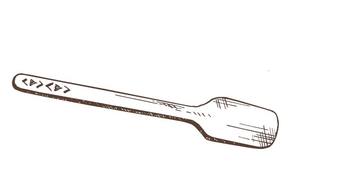 |
Stirrer (stirrer, mixer)For mixing and infusing flour into hot water, a stirrer or mixer was used – a wooden spatula, usually made from hardwood – linden, birch, maple. |
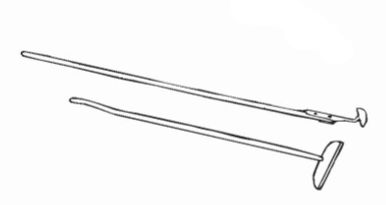 |
Rake (rake, poker)Wooden tools with special metal tips (or entirely made of metal), called rakes, were used to pull coal out of bread ovens. Some also had special wooden sticks with a metal tip for poking coal, called pokers. |
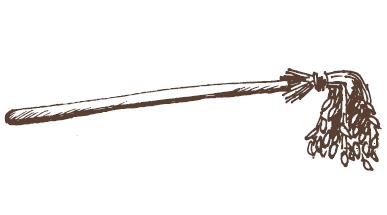 |
Oven broom (broom; swab, swob, besom)As the “floor” of the oven was made of bricks or a specially made clay screed, it was necessary to sweep the kiln with a broom or besom. |
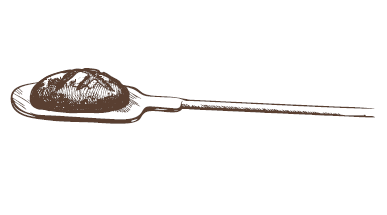 |
Peel (bread-shovel, oven-peel, baker’s peel)The peel – wooden bread-shovel was used for forming loaves and putting them in the oven, as well as pulling them back out. Peels were also made of hardwood, usually birch. They could have been carved from one piece of wood, but often the "tongue" of the peel was made separately and attached to the handle. A smaller peel was also often used for baking flat cakes. |
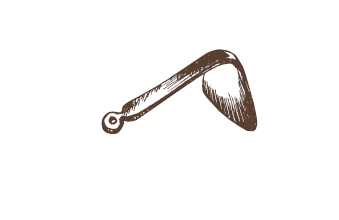 |
Trough scraper (scraper, cleaner)The trough scraper was a small metal tool, sometimes with a wooden handle, used to scrape the trough after baking. It was most often forged by the local blacksmith. |
Special bread cloth - a piece of linen cloth – was used for covering the trough while the dough was leavening and covering loaves after removing them from the oven. A linen towel was also often used for covering loaves. Sometimes the trough had a special wooden lid. A sieve was used for sifting flour and a wooden scoop was used for grabbing flour. Some places also had a special wooden rack for placing the trough by the oven. A wooden dipper was used to scoop water. Lukewarm water was poured into a bowl or wooden bucket and used for soaking one’s hands while forming the loaf. A pail or bucket was used for bringing flour from the barn. The quality of the oven was also crucial.
BAKING BREAD
Necessary ingredients for baking bread: rye flour, water, yeast, caraway, (salt, sugar – in the past, a good mistress did not add salt or sugar to rye bread dough), maple leaves.
Bread preparation: mixing, leavening, kneading, leavening again, heating the oven, preparing for baking, making loaves, putting them into the oven, baking, taking out the trough scraper and tasting, removing and cooling the bread.
Depending on the size of the oven, one batch consisted of 6, 8, 12 loaves and a small loaf, which was created by scraping the trough. Baking odd numbers of loaves in one batch was avoided as superstition stated that it would cause a death in the house. A small round lump of dough, rolled in flour, was left as a starter for the next batch, but most bakers claimed that the yeast left in the trough was enough because the trough was never washed, only scraped. When breaking in a new trough, it was decorated and rubbed with an onion – supposedly it promotes fermentation.
*Information prepared according to ethnographer I. Čekstere's materials.
Atbalsta Zemkopības ministrija un Lauku atbalsta dienests
Projekta nosaukums: Kulinārā tūrisma produkts "Rudzu ceļš". Projekta numurs: 19-00-A01630-000002.
Partneri: LLTA "Lauku ceļotājs", SIA "JS Caunītes" Vineta Cipe IK "Dzīles", z/s "Bērziņi", z/s "Buliņi", z/s "Klajumi".
Vairāk informācijas par projektu “Rudzu ceļš”
Vairāk informācijas par Eiropas Lauksaimniecības fondu lauku attīstībai pieejams EK tīmekļa vietnē
